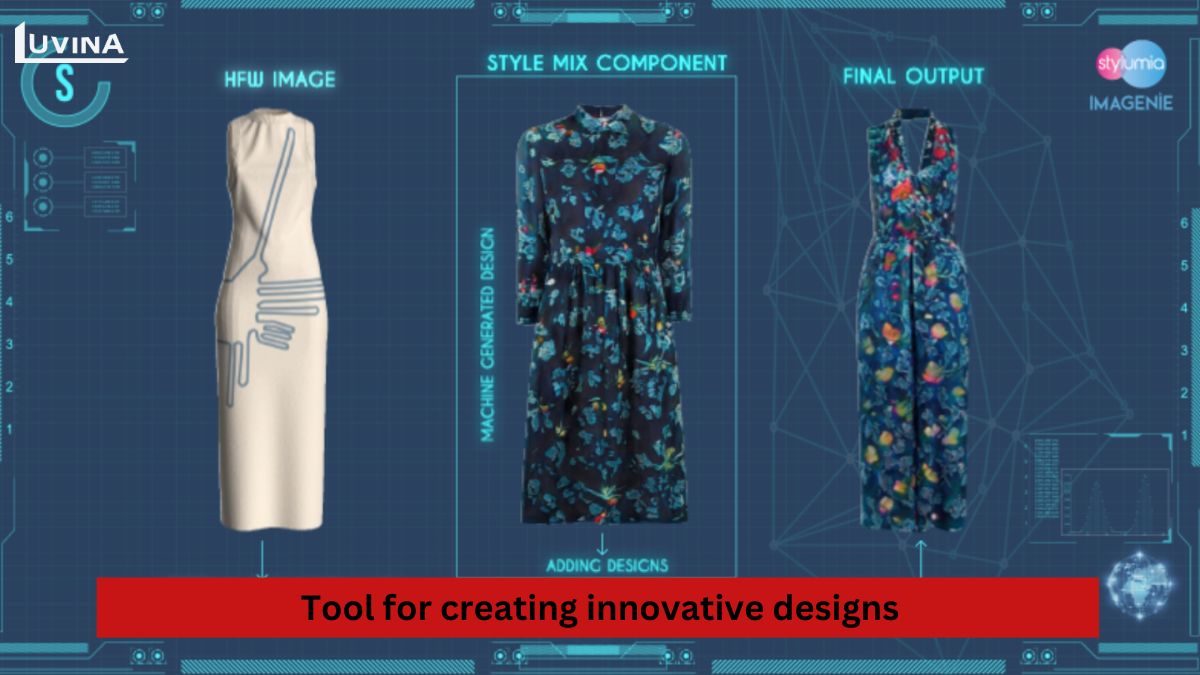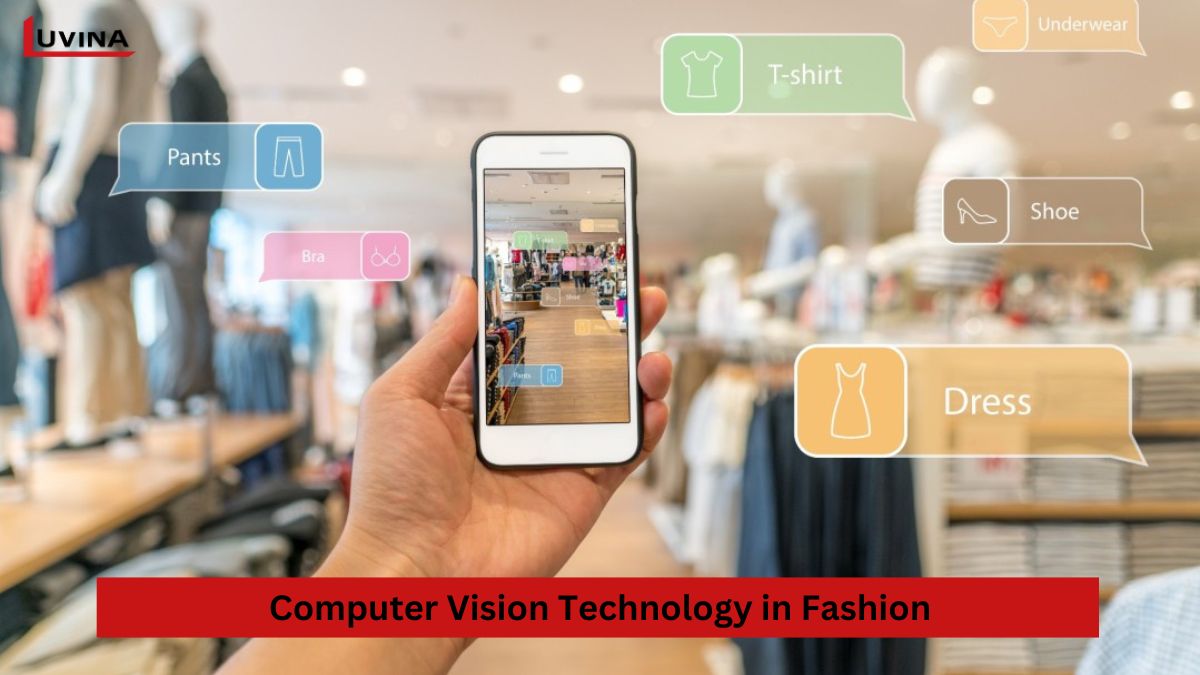AI in fashion industry may amaze, as a new force anew, one that will unwind a promising era for the sectors of apparel and creativity. According to an analysis by McKinsey, AI can add between $150 billion to $257 billion in profits in the next 3 to 5 years to the fashion and luxury industries. This huge figure shows that AI is not just a disruptive force but also creates value for the fashion industry. AI’s potential to reshape the fashion landscape is extremely diverse, from trend forecasting and optimizing the supply chain to customizing the shopping experience.
While the following article discusses artificial intelligence’s influence on the development process of fashion products, join us to discover how such superior technology can influence one of the biggest industries in the world.
How is AI in fashion industry?
It is believed that AI in fashion industry is one of the most effective transformative forces that impresses change in each and every aspect and stage of the field, right from design to production, sales, and optimization of customer experience. Following are some of the areas where AI is being used in the fashion industry.

1. Personalized marketing & shopping experience
Today, in the age of e-commerce, the power of personalization has landed squarely in the hands of retailers, and AI will help businesses get ahead. Using AI, brands can create shopping experiences and marketing no one ever imagined. To do so, AI may use critical customer data: past purchases, browsing history, social network activity, or any other source useful for building highly targeted marketing campaigns with personalized recommendations.
These personalized recommendations and marketing campaigns will increase customer engagement and boost sales. Not only large retailers like Asus, Alibaba, and Amazon are leveraging AI in fashion industry, but small businesses are also using it to personalize their customers’ experiences.
>> See more: AI Personalization E-commerce
2. Trend forecasting
Fashion and trends always go hand in hand. That is why one of the most popular applications of AI in the fashion field is trend forecasting. Major players in fashion trend forecasting are widely using artificial intelligence to track shopping behaviors, consumer psychology, customer preferences, social media trends, market fluctuations, and global events to make accurate predictions. From there, fashion brands can design suitable collections.
3. Automated ad buying
AI in fashion retail runs programmatic advertising. Expanding on the thought: AI performs real-time buying of ad spaces, targets customer segments, and optimizes ad spending independently. With such capabilities, most fashion brands are now leveraging AI in heavy-duty advertising campaigns to drive greater customer engagement, higher conversions, and more customer loyalty for the ultimate maximization of ROI.
4. Chatbots
Chatbots are among the applications of artificial intelligence in the fashion industry, which directly impacts customer experience. The AI-driven chatbot will be able to engage customers and answer their queries, thus offering suggestions for personalized recommendations that uplift the shopping experience and encourage customer interaction. The response speed will almost be instantaneous, hence on time, clearing up many customer queries and ensuring that customers feel safe due to timely support.
>> Read more: Enterprise AI chatbot development service
Examples and use cases of AI in the fashion industry
The fashion industry keeps changing with time, and the incorporation of AI into it fastens the process of growth. AI has proved to be that strong ammunition that can bring holistic changes and help the industry overcome the challenges before it. Following are some of the applications and examples of AI in fashion industry.
1. Creative ideas for designs
Currently, most companies in the fashion sector are focused on manual clothing design. However, AI is seen as an effective way of taking over design in situations where human designers cannot work. In fact, AI design tools for clothes use image data from past products of a brand or from other designers in combination with data relating to customer preference and current fashion trends. Although experiments have shown that AI still has limitations in design, with the rapid development of AI in the clothing industry, designs created by AI will soon become practical.

2. Fashion virtual try-on
By utilizing advanced algorithms and computer vision technology, AI can create extremely realistic and personalized virtual experiences for customers. By combining AI and AR (augmented reality), many fashion brands today not only offer highly engaging online shopping experiences but also reduce the likelihood of returns. The feature of virtual fitting gives realistic images of trying on clothes that help customers make better choices. Certain try-on aspects that find support from AI in fashion industry include:
- Accurately measuring and analyzing body sizes using images and videos uploaded by users.
- Creating virtual fitting rooms for users to see how they would look in the clothes.
- Simulating the movement of clothing items on a virtual avatar for a more realistic view of the actual garments’ movement.
- Providing personalized product recommendations to enhance customer satisfaction based on purchase history, user preferences, and style choices.
- Analyzing the facial expressions and emotions during the time of fitting in order to take feedback from users on various styles, refine recommendations, and understand customers better.
- Virtual fitting to be embedded on all three platforms: web, mobile applications, and social media to provide a similar shopping experience for customers.
3. Fashion business operations
AI in the fashion industry is not only helping in specific areas of the field but also supporting overall business operations. For instance, AI can predict fashion purchasing trends. It does this by analyzing vast data sources, social media trends, and sales information to predict upcoming trends. This would help the fashion business make informed decisions over their new collections, making sure they provide products that address current styles and emerging trends. Moreover, it would help fashion industries enhance effective marketing in revenue optimization, customer satisfaction, and inventory control with proper planning.
To analyze and build these effective marketing strategies, AI would operate on huge data regarding sales figures, historical trends, and customer preferences to ensure product selection, quantity, and placement in stores. These data-driven decisions help fashion businesses avoid excess stock, prevent stockouts, and maximize profitability.
Finally, AI is also used to help with visual merchandising in online or physical stores. By analyzing customer preferences and fashion trends, AI makes product recommendations, suggests styles, and delivers outfit combinations for a truly engaging and personalized shopping experience.
4. Fashion e-commerce
Due to changes in customer shopping habits, fashion e-commerce has been one of the fastest-growing niches in recent years. With the help of AI in the fashion industry, fashion e-commerce will continue to develop rapidly and powerfully. AI can provide personalized product recommendations to enhance the customer experience. These recommendations come with analyses of shoppers’ browsing history that enable the understanding of the preference and, accordingly, help in recommending related products for each customer.
These relevant recommendations will increase the possibility of making more purchases and building customer loyalty towards the brand.

Additionally, AI improves product search and discovery by improving the relevance of search results, hence making product exploration much easier. Apart from keyword-based searches, visual searches with the integration of natural language processing by AI allow users to upload images or verbally describe items. Such advanced search capabilities allow shoppers to find exactly what they need in fashion, making for an extremely seamless and user-friendly experience.
>> Read more: Artificial intelligence in e-commerce examples
5. Fashion Marketing
Marketing in the fashion industry increases sales, coverage, and customer experience. There is no excuse why the artificial intelligence fashion industry cannot apply to marketing. With AI’s help, businesses involved in the fashion sector can design customized marketing strategies, adapt content, suggest products, and run promotions according to customer preference.
Besides, AI can also analyze shopping history, preference, and customer behavior for loyalty program offerings that enhance customer engagement and foster loyalty in that customers feel valued and receive benefits in line with their shopping patterns.
The most excellent way in which AI is used in fashion marketing is in building a retargeting campaign. AI will study the customer’s behavior and preference through customer interaction tracking on a fashion brand website or app. After that, AI in fashion industry would create retargeting campaigns based on insights into the products customers are interested in.
Such may include serving ads to customers who have visited the website or engaged with certain products and did not buy. AI ensures that all the ads being retargeted will directly appeal to customer interests and increase conversion rates.
6. AI technologies trend in fashion
AI Fashion Week, New York, has shown that AI in fashion industry indeed has a bright future. Moreover, Ray-Ban and Meta announced the production of AI-powered smart eyeglasses. If you are a fashion enthusiast or a designer ready to push creative limits, you should closely follow the development of AI in fashion industry. Here are three AI trends that are foreseen to keep making waves in this area:
7. AI & ML
AI and machine learning already hold a strong position in the current fashion industry. In the future, though, AI will be widely used for portfolio management, allowing fashion companies to analyze customer data, optimize product recommendations, and streamline inventory. By using techniques like generative adversarial networks, AI can create stylish fashion designs and even produce fully innovative outfits.
Machine learning algorithms will also be widely used in image recognition to identify patterns and objects in images, and recognize clothing styles and colors, which will be very useful for detecting counterfeit items.
8. Computer vision
In recent years, computer vision has been widely used to personalize fashion recommendations for online shoppers. By analyzing user data and preferences, retailers can suggest products that match each individual’s style, increasing customer engagement. Additionally, currently, computer vision is also heavily used in fashion design to support AI, optimize supply chains, and analyze stores in real-time.

In the future, this emerging AI in the fashion industry technology will create new trends in many areas of fashion. For example, 3D models and virtual prototypes will allow designers to visualize and test designs before actual production, reducing waste and cost. Based on these models, AI can generate designs, and styles, and even help create marketing content to cut down on creative process time. Computer technology will also play an important role in creating sustainable fashion.
9. Generative AI and deep learning
Generative AI is already being widely used in fashion design and is expected to remain a strong trend in the years to come. Designers will use AI combined with images of various clothing items to create unique and surprising designs, which is useful for transferring styles between different fashion items. Additionally, deep learning models supported by AI will analyze large datasets, such as social media posts and organization activities, to predict emerging fashion trends. In the future, generative AI will also be crucial in optimizing visual search, virtual try-ons, counterfeit evaluations, and more.
Conclusion
In a dynamic and ever-evolving industry like fashion, the presence of AI will have a transformative impact, opening up a new era. AI in fashion retail will empower designers to explore new boundaries and use modern tools to create unimaginable possibilities.
Although the AI transition is still in its early stages, the potential of AI in the fashion industry is immense. This will be a prime example of how technology can drive innovation and significant growth while ensuring sustainability and a customer-focused approach.
Related Posts:









Read More From Us?
Sign up for our newsletter
Read More From Us?
Sign up for our newsletter